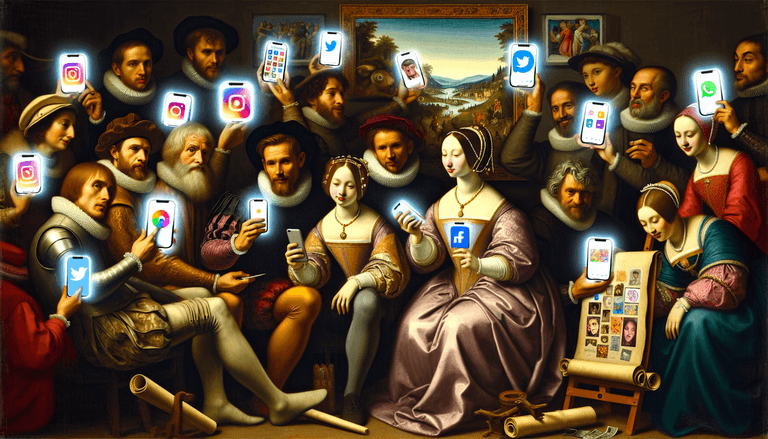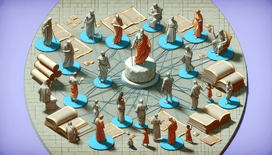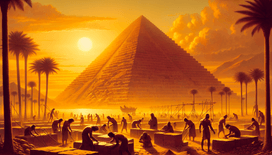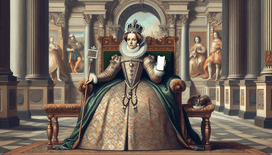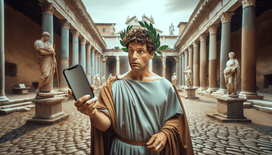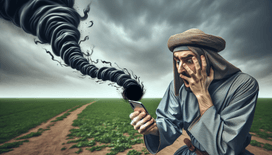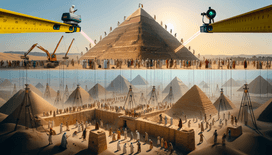Ah, the Renaissance, that period of spectacular art, dramatic discoveries, and yes, elaborate fashion that seemed to involve more layers than a mille feuille. Now, close your eyes and imagine Leonardo da Vinci snapping a selfie with one hand while sketching out the Mona Lisa with the other - hashtag MonaMyBestie. Welcome to the Renaissance 2.0, where social media changes everything!
Da Vinci: The Influencer
First on the medieval social media scene, of course, would be our boy Leonardo da Vinci. Let's be honest – with a mind like his, would he not have embraced platforms like Twitter, Instagram, and TikTok? I can almost hear the pings from his notifications now. "@LeoTheArtist: Inventing a new flying machine today. Stay tuned! #SkyIsTheLimit #JustWingIt."
Imagine videos of him unveiling his latest quirky contraption, complete with cheeky captions like "It’s not just a giant corkscrew. Trust me. #NewtonAin'tGotNothingOnMe" or "Creating the future, one sketch at a time. #ArtMeetsScience." His follower count would rival any modern influencer, and with those luscious locks and enigmatic smile, it’s safe to say he'd have the "thirst trap" market cornered too.
Michelangelo's Masterpieces in Moments
Michelangelo would be stretched to his metaphorical and literal limits, juggling numerous social media accounts as he chiselled away at his statues. Forget spending years on David; with time-lapse videos and live streaming, his audience would witness each glorious chip away in real-time. "@MikeTheSculptor: Stone-cold genius at work. #ChiselledCheeks"
Burdened with commissions, his tales of "creative struggles" might even appear under #MichelangeloMondays on YouTube, complemented by vlogs explaining how he maintains work-life balance while gripping tightly to his sanity and marble mallet. Don't worry Michelangelo, we've all had that one project that eats at us like a persistent pop-up ad.
Medici’s Mighty Reach
Now enter the formidable Medici family, the real powerhouses pulling Florence’s strings. Their influence today would be akin to House Medici running a tech startup accelerator. Picture the cunning Cosimo de’ Medici using LinkedIn to network with every promising artist and scientist in Italy, luring them into his sphere with offers of sparkling ducats and enticing shares in "the futures of art and science." Business meetings hashtagged #RenaissanceRevolution no less.
They’d surely have capitalised on the power of viral trends. Remember those wild festas? Snap, share, and become the talk of every town. "When in Florence, the party never stops, or do we… #MediciMoney" indeed!
The Church Goes Virtual
Even the Church might have a futuristic twist. Pope Julius II would eagerly be updating statuses and sharing divine interventions via Facebook Live from the Sistine Chapel ceiling. Thou shalt press "like," indeed. "@JuliusFromTheVatican: Papal wisdom now downloadable. #KeepTheFaith"
Indulgences could be swiftly purchased via PayPal – no queues, just salvation at the click of a button. Of course, the Holy See might have some stern words for any heretical memes circulating about the Resurrection being faked. #BreakingNews: Eliminate those early Tinder unmatch notifications, possible reappearances being frowned upon!
Thinking Big with Tech
Let’s zoom out a little to wonder how technology would bolster the grand philosophical debates of the time. Would Galileo Galilei tweet provocatively under #CopernicanConundrums? The world might truly have realised the gravity of his discoveries through late-night Twitter debates as hashtags like #EpurSiMuove trended worldwide.
Meanwhile, the infamous Girolamo Savonarola would surely be a most fervent Twitter troll, calling out secularism left, right, and centre. Woe betide any virtual faux pas, as virtual bonfires of vanities would expel the influencers quicker than they could say "block."
A Renaissance Forever Young
Thanks to social media’s immediate and far-reaching nature, the Renaissance might have lasted even longer, spanning not just geographically but temporally too. Every discovery would go viral, transforming Renaissance cities into centers of global convergence, with culture and ideas exchanged like the hottest memes. The Library of Alexandria might never have burnt down had cloud storage backed up its holdings! #LibrarianGoals
This whimsical journey through an alternative Renaissance reminds us that while the allure of social media’s connectivity is as timeless as Da Vinci’s Last Supper, the spirit of discovery springs eternal, aided or unaided by the tech toys we tinker with today.
